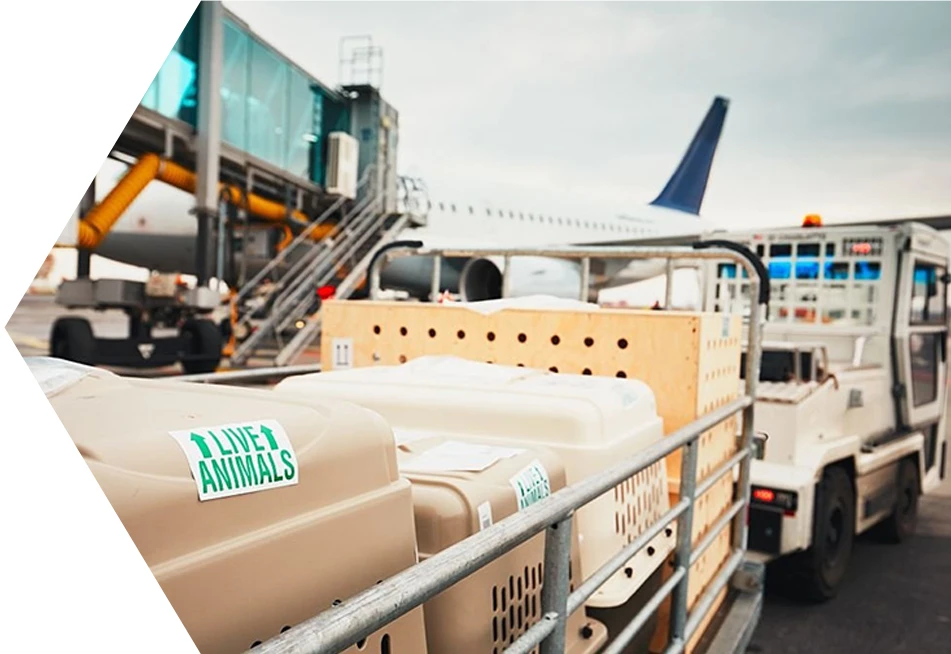As the world becomes more interconnected, the transportation of live animals has become an essential aspect of global trade. Whether it’s for breeding purposes, research, or simply to bring a pet to a new home, the shipping of live animals requires special care and attention to ensure their safety and well-being. In this article, we will discuss the importance of proper live animal shipping, including regulations, cost, and best practices.
Transporting Live Animals by Air
One of the most common methods of live animal transport is by air. Many airlines offer cargo services for live animals, with specialized compartments for their safe transport. However, the process can be complex and requires careful planning to ensure the animals arrive safely at their destination.
Live Animals Regulations
Transporting live animals is regulated by various international and national organizations, such as the International Air Transport Association (IATA) and the International Civil Aviation Organization (ICAO). These organizations provide guidelines and standards for the proper transport of live animals, including requirements for transport containers, labeling, and documentation.
Live Animal Shipping Cost
The cost of shipping live animals varies depending on the type of animal, its size and weight, the distance traveled, and the mode of transportation. Air freight is often the most expensive, followed by sea freight, and land transport. However, the cost is a small price to pay for ensuring the animal’s safety and well-being during transport.
Live Animal Cargo Flights
Live animal cargo flights are specially designed to transport live animals. These flights offer features such as temperature-controlled compartments, specialized containers, and trained personnel to ensure the animals’ safety and comfort during transport.
Common Types of Live Animals Shipped
Live animals that are commonly shipped include dogs, cats, birds, fish, reptiles, and even livestock such as horses and cows. Each type of animal requires specific care and attention during transport, and it is essential to ensure their needs are met to prevent injury, illness, or death.
Best Practices for Live Animal Shipping
To ensure the safe and humane transport of live animals, several best practices should be followed. These include:
- Use specialized containers, such as shipping crates or containers, designed specifically for the type of animal being transported.
- Label containers with clear and visible animal stickers, including information such as feeding instructions, medical requirements, and contact information.
- Use shipping labels that include the animal’s name, destination, and contact information for the sender and receiver.
- Provide proper bedding and ventilation for the animal during transport.
- Ensure the animal has access to water and food, as well as any necessary medications or special dietary requirements.
- Avoid shipping live animals during extreme weather conditions or times of high stress.
How Much Does it Cost to Ship a Live Animal?
The cost of shipping a live animal varies depending on several factors, including the size and weight of the animal, the distance traveled, and the mode of transportation. It is best to contact a logistics company or freight forwarder, such as Hamrahdezh, for a quote and to discuss the specific needs of your animal.
What is Live Animal Transport?
Live animal transport is the process of shipping live animals from one location to another, often for breeding, research, or personal reasons. It requires careful planning, preparation, and adherence to regulations and best practices to ensure the animals’ safety and well-being during transport.
Can Live Animals Be Shipped?
Yes, live animals can be shipped, but it requires special care and attention to ensure their safety and well-being. The transport of live animals is regulated by various international and national organizations, and it is important to follow their guidelines to ensure the animals arrive safely at their destination.
What Airlines Ship Live Animals?
Many airlines offer cargo services for live animals, including Air Canada Cargo, Delta Cargo, Emirates SkyCargo, Lufthansa Cargo and Hamrahdezh cargo. However, it is important to research and compare different airlines’ policies and services to find the best fit for your animal’s needs.
Conclusion
Proper live animal shipping is crucial to ensure the safety and well-being of the animals during transport. It requires careful planning, preparation, and adherence to regulations and best practices. By working with a reputable logistics company or freight forwarder, such as Hamrahdezh, and following the guidelines outlined in this article, you can ensure your live animal shipment is successful and stress-free for both you and your furry, feathered, or scaly friend.




